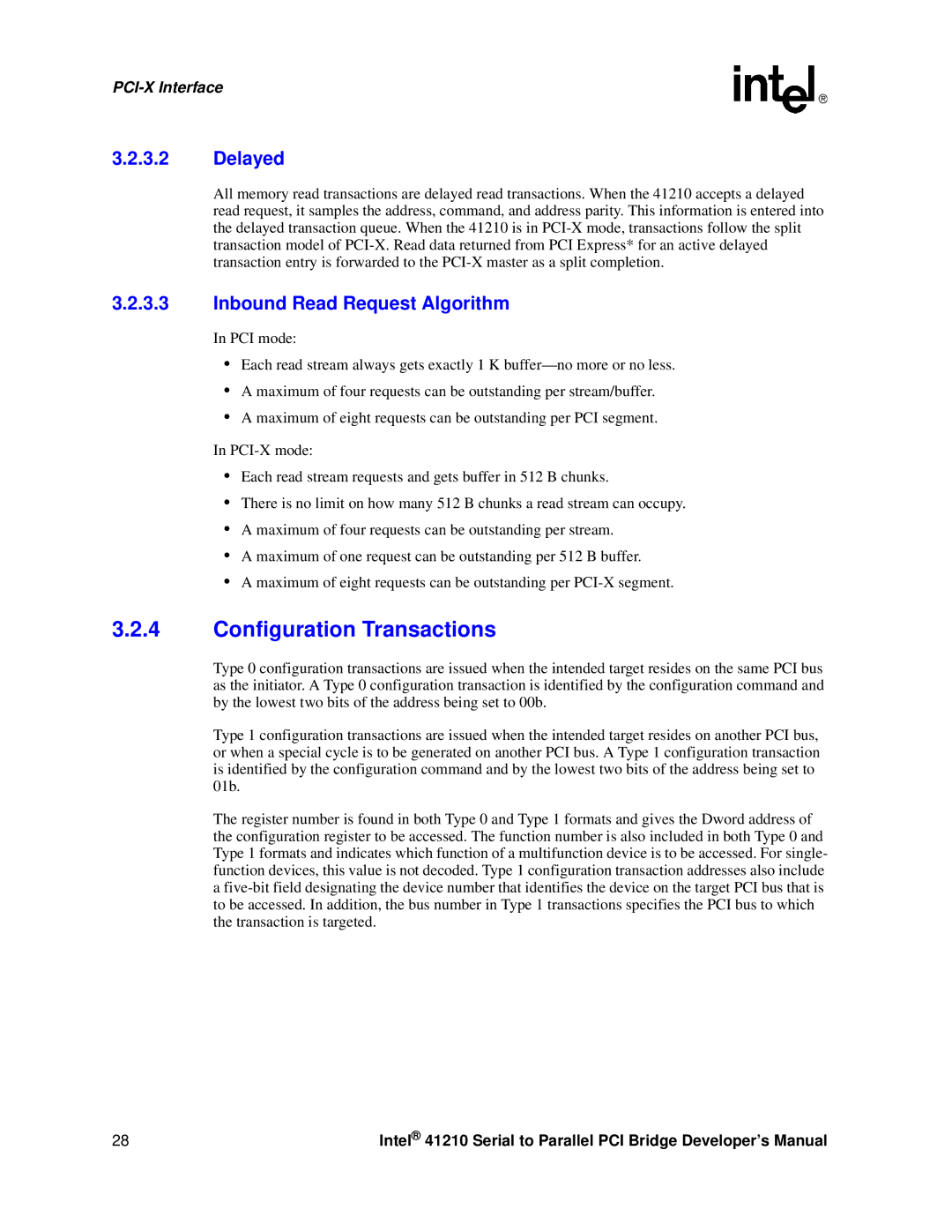3.2.3.2Delayed
All memory read transactions are delayed read transactions. When the 41210 accepts a delayed read request, it samples the address, command, and address parity. This information is entered into the delayed transaction queue. When the 41210 is in
3.2.3.3Inbound Read Request Algorithm
In PCI mode:
•Each read stream always gets exactly 1 K
•A maximum of four requests can be outstanding per stream/buffer.
•A maximum of eight requests can be outstanding per PCI segment.
In
•Each read stream requests and gets buffer in 512 B chunks.
•There is no limit on how many 512 B chunks a read stream can occupy.
•A maximum of four requests can be outstanding per stream.
•A maximum of one request can be outstanding per 512 B buffer.
•A maximum of eight requests can be outstanding per
3.2.4Configuration Transactions
Type 0 configuration transactions are issued when the intended target resides on the same PCI bus as the initiator. A Type 0 configuration transaction is identified by the configuration command and by the lowest two bits of the address being set to 00b.
Type 1 configuration transactions are issued when the intended target resides on another PCI bus, or when a special cycle is to be generated on another PCI bus. A Type 1 configuration transaction is identified by the configuration command and by the lowest two bits of the address being set to 01b.
The register number is found in both Type 0 and Type 1 formats and gives the Dword address of the configuration register to be accessed. The function number is also included in both Type 0 and Type 1 formats and indicates which function of a multifunction device is to be accessed. For single- function devices, this value is not decoded. Type 1 configuration transaction addresses also include a
28 | Intel® 41210 Serial to Parallel PCI Bridge Developer’s Manual |
